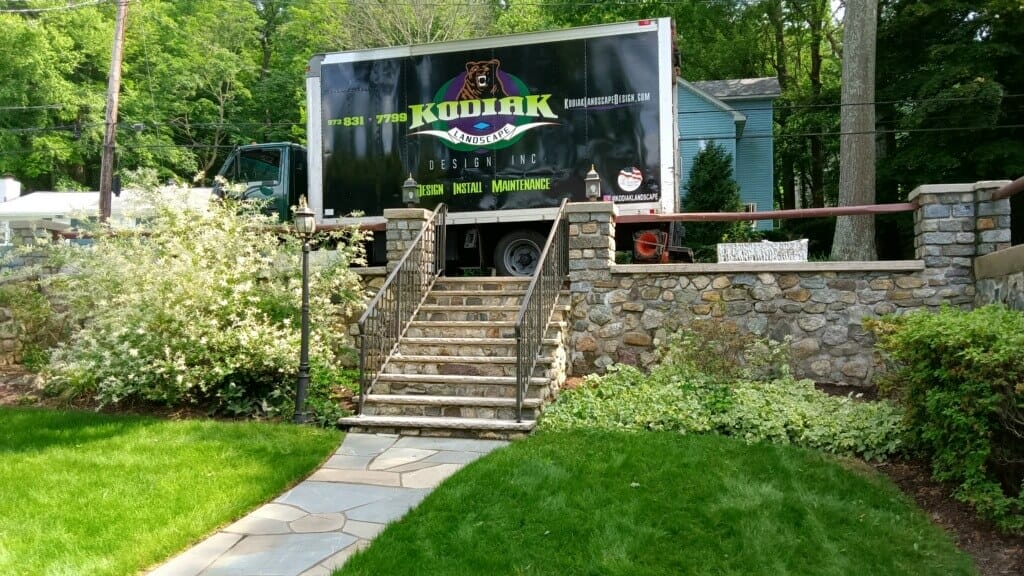Imagine stepping into your backyard and feeling like you’ve been transported to a serene oasis. This dreamy scenario is within reach when you master the art of combining stonework and landscaping, otherwise known as hardscaping. Combining these elements can turn any outdoor space into a cohesive, eye-catching retreat.
This blog post will guide you through the essentials of hardscaping, the role of stonework, and how to seamlessly blend it with landscaping. Whether you’re a homeowner looking to upgrade your yard or a professional garden designer, you’ll find valuable insights and practical tips to make your next project a stunning success.
Understanding Hardscaping
Hardscaping refers to the non-living elements in a landscape design. These include features like patios, walkways, retaining walls, and water features. Essentially, if it’s made from stone, brick, wood, or another durable material, it’s part of your hardscape.
Why is hardscaping important? First, it provides structure and organization to your outdoor space. It creates functional areas for activities like dining, relaxing, and gardening. Second, hardscaping adds visual interest and contrast to the softer elements like plants and flowers, making your yard more dynamic and attractive.
When done correctly, hardscaping not only enhances the beauty of your landscape but also increases your property value. It’s a win-win situation for homeowners and garden designers alike.
The Role of Stonework
Stonework is a vital component of hardscaping, offering both functionality and aesthetic appeal. Various types of stone are used in outdoor designs, each bringing its unique characteristics to the table.
Common Types of Stone
- Flagstone: Known for its irregular shapes and natural look, flagstone is perfect for creating rustic patios and walkways. Its rough texture also makes it slip-resistant, an added safety feature.
- Limestone: This versatile stone comes in various colors and can be easily shaped and carved. It’s often used for retaining walls, steps, and even decorative features.
- Granite: Extremely durable and available in a range of colors, granite is ideal for high-traffic areas like driveways and walkways. Its polished finish adds a touch of elegance.
- Slate: With its layered appearance and rich colors, slate is commonly used for patios and pathways. It’s relatively easy to work with and offers a sophisticated look.
Each type of stone offers different benefits, so it’s essential to choose the right one for your specific needs and aesthetic goals.
Fundamentals of Landscaping
Landscaping involves the living elements of your outdoor space, including plants, trees, flowers, and grass. Effective landscaping complements hardscaping by adding softness, color, and texture.
Key Principles of Landscaping
- Balance: Achieving visual balance involves the careful arrangement of plants and other elements to create a harmonious look. Symmetrical designs offer a formal appearance, while asymmetrical layouts provide a more relaxed feel.
- Unity: Unity ensures that all elements in your landscape work together to create a cohesive design. Using consistent colors, textures, and plant varieties helps achieve this.
- Scale and Proportion: These principles ensure that all elements in your landscape are appropriately sized in relation to each other and the overall space. Mixing different plant heights and sizes adds depth and interest.
- Color and Texture: The use of various colors and textures can significantly impact the visual appeal of your landscape. Consider the seasonal changes in foliage and flowers to maintain year-round interest.
Understanding these principles is crucial for creating a landscape that enhances and harmonizes with the hardscaping elements.
Case Studies of Successful Hardscaping and Landscaping Combinations
To inspire your next project, let’s look at some successful combinations of stonework and landscaping.
Case Study 1: Modern Minimalism
In this project, sleek granite pavers were used to create a minimalist patio. The surrounding landscape featured low-maintenance succulents, ornamental grasses, and a few strategically placed boulders. The result was a clean, contemporary look that required very little upkeep.
Case Study 2: Rustic Retreat
A rustic retreat was achieved using irregularly shaped flagstone for walkways and a patio. Native plants, wildflowers, and small shrubs were planted around the stonework, creating a natural, relaxed atmosphere. A stone fire pit added a cozy focal point for outdoor gatherings.
Case Study 3: Elegant Estate
For a more formal setting, limestone was used to construct elegant retaining walls and steps. Manicured lawns, neatly trimmed hedges, and classic flower beds provided a refined backdrop. Decorative stone urns and sculptures added a touch of sophistication.
Each of these projects demonstrates the importance of choosing the right stone and plants to achieve a specific look and feel.
Practical Tips for Integrating Stonework and Landscaping
Ready to start your project? Here are some practical tips to help you integrate stonework and landscaping seamlessly.
Plan Your Design
Before you begin, sketch out a detailed plan of your yard. Identify the areas for hardscaping and landscaping, and consider how they will interact. This will help ensure a cohesive design and prevent costly mistakes.
Choose Complementary Materials
Select materials that complement each other in terms of color, texture, and style. For example, if you’re using a warm-toned stone like flagstone, choose plants with similarly warm hues to create a harmonious look.
Focus on Functionality
Make sure your design is not only beautiful but also functional. Consider how you will use the space and choose materials and plants that suit your needs. For example, if you have children or pets, opt for durable, slip-resistant stone and non-toxic plants.
Incorporate Focal Points
Focal points draw the eye and add interest to your landscape. Consider incorporating features like a stone fountain, a unique tree, or a sculpture to create visual interest.
Balance Hard and Soft Elements
Achieve balance by blending hardscaping and landscaping elements. For example, soften the edges of a stone patio with lush flower beds or add greenery to a stone retaining wall with climbing plants.
Environmental and Maintenance Considerations
While hardscaping and landscaping can enhance your outdoor space, it’s essential to consider the environmental impact and maintenance requirements.
Sustainability
Choose sustainable materials and practices to minimize your environmental footprint. Opt for locally sourced stone and native plants that require less water and maintenance. Consider incorporating permeable paving to reduce runoff and promote groundwater recharge.
Maintenance
Regular maintenance is crucial for keeping your outdoor space looking its best. Choose low-maintenance plants and materials that suit your lifestyle. For example, opt for drought-tolerant plants if you live in a dry climate and choose stone that withstands the weather in your area.
Water Management
Proper water management is essential for maintaining a healthy landscape. Incorporate features like rain gardens, swales, and permeable paving to manage water runoff and reduce erosion. Use efficient irrigation systems to conserve water and ensure your plants receive adequate hydration.
Combining stonework and landscaping can transform your outdoor space into a harmonious retreat. By understanding the principles of hardscaping and landscaping, choosing the right materials, and considering sustainability and maintenance, you can create a beautiful, functional yard that enhances your home and lifestyle.
Ready to get started on your next project? Contact Kodiak Landscaping & Designs for expert advice and services to help you achieve the perfect hardscaping harmony.









